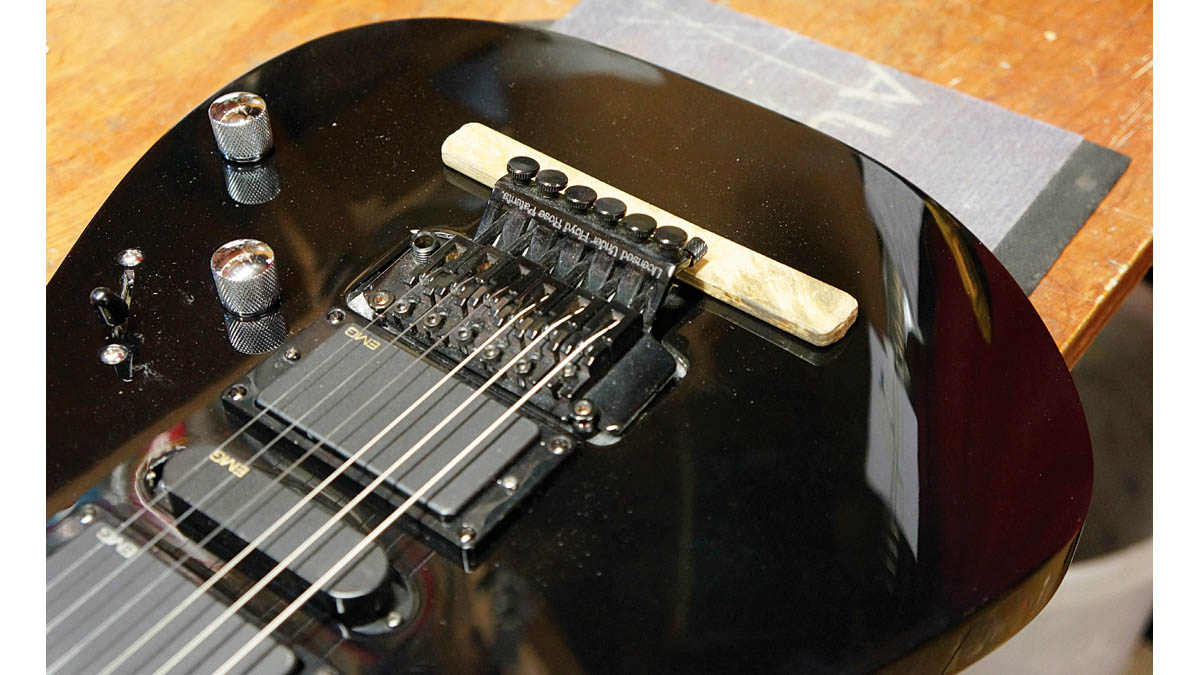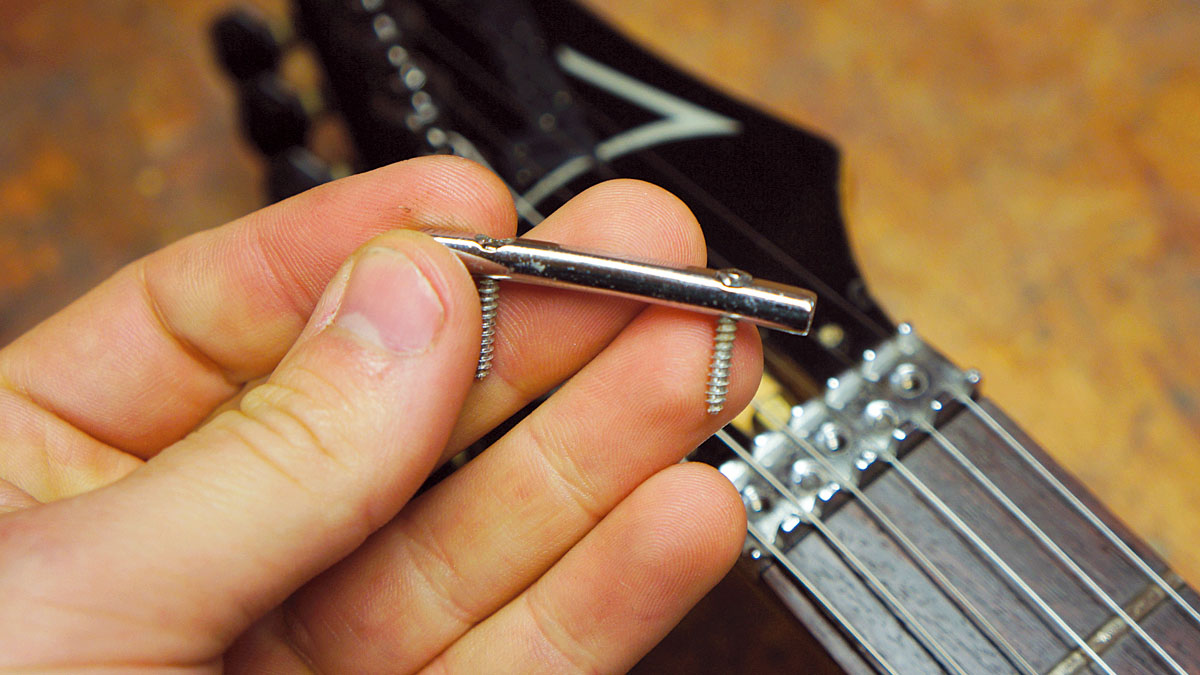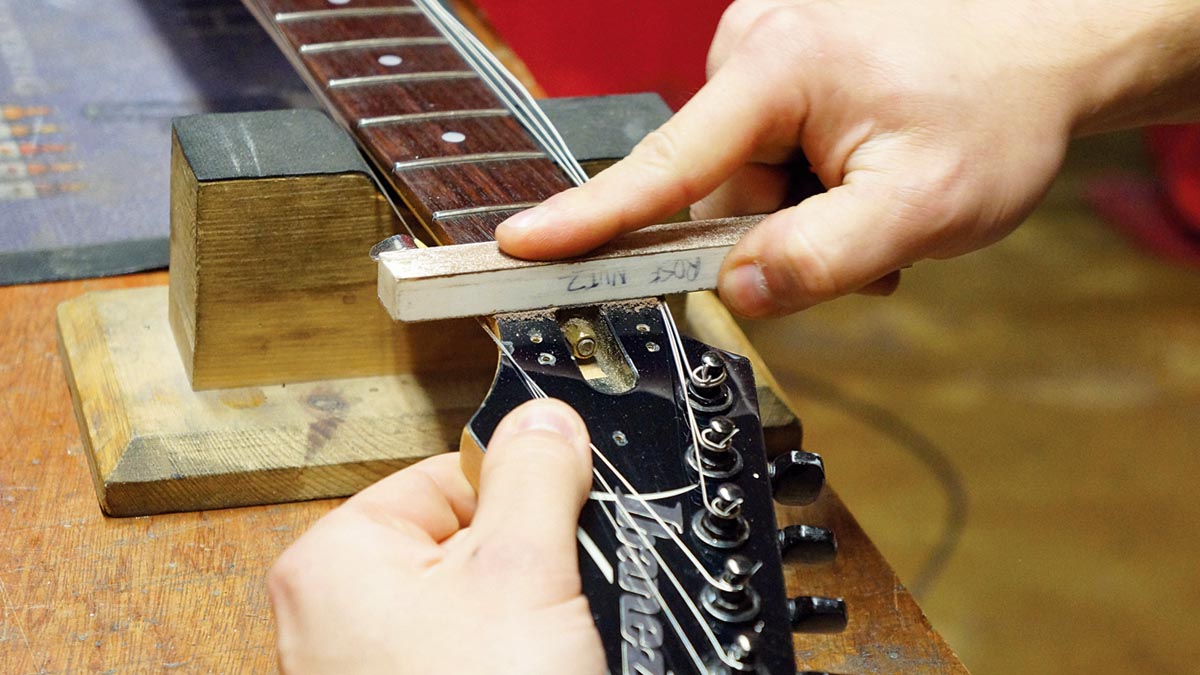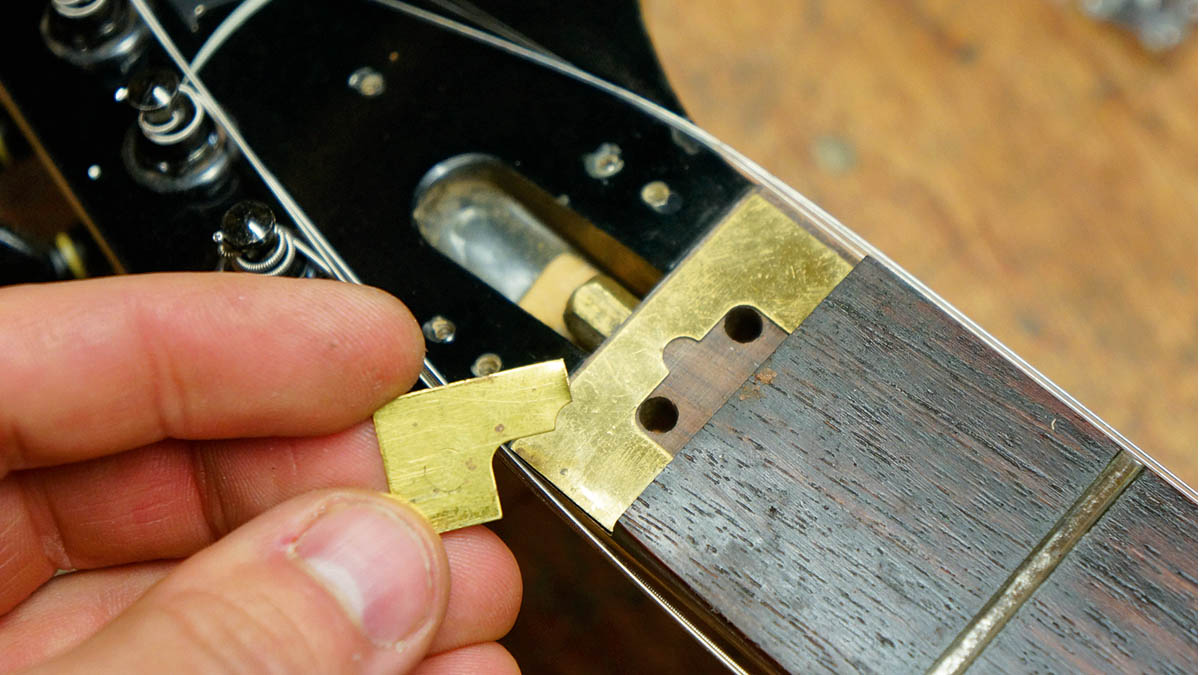How to set your Floyd Rose's locking nut height
Fine-tune the action once and for all at the less obvious end of the neck

The locking nut is integral to the high-performance tremolo system - it removes the non-playing part of each string from the equation by locking it down. This Floyd Rose one is the most commonplace but it’s also quite common to see the nut height set wrong - often by the factory.
We figure it must be too fiddly for the regular assembly line to get it right each time so they err on the high side each time. Mankind has not come this far to put up with that minor annoyance! Being as this will be set for life, let’s take care to do this properly and it will be a small but important victory that you can reap the rewards from!
Set a nut too low and it will buzz on 1st fret; set too high and it’s hard work and intonates out of tune. Adjusting takes a couple of specialized tools and some careful measuring but can get you the comfortable action you so desperately crave. After all, setting the nut height is just as important as setting the bridge height.
What you need

- PH1 Screwdriver
- 2.5mm, 3mm and 4mm allen keys
- Feeler gauge
- Fresh strings
- Stringwinder
- Stringcutters
- Specialised sanding block faced with 120 grit sandpaper
- 2 capos
- Tuner
- Wooden strip for blocking the bridge
- Tin snips for creating shims
- A beer can makes brill shim material
SKILL LEVEL: MEDIUM
Step 1

Let’s get to work - string up your guitar with a fresh set of strings. It’s not a good idea to set up anything around old worn strings, especially if they have bends or kinks in them! You don’t need the locking clamps around at the moment so stash them away safely.
Step 2

As a Floyd Rose veteran I don’t need to tell you about the woes of tuning this system up. Let’s do ourselves a favour and block the bridge off temporarily. This trusty piece of wood allows us to get on with repeat tuning and make some progress on addressing the nut height.
Step 3

We absolutely cannot adjust nut height unless the truss rod is set. Press on the 1st fret then press down on the 15th fret and we’ll use the straight string as a guide to see how bent forward the neck is. The feeler gauge is put over 8th or 9th fret underneath the string; .007" is the magic clearance. Adjust the truss rod accordingly.
Step 4

Stick the capo onto the 3rd fret and check the gap over the 1st fret. There should be a clearance of .002" to .006" measured with a feeler gauge. Be sure to accurately measure each side. We like the high E string to be the lowest and the bass E string to have more clearance to allow for a bit of ferocity.
All the latest guitar news, interviews, lessons, reviews, deals and more, direct to your inbox!
Step 5

The readings from step 4 will determine if you take route A or route B later, but whichever, get this thing out of the way. We’ll be lifting the strings off so we can attack under the nut; this string retainer just gets in the way. We’ll put it back on later and set the height.
Step 6

There are two ways that a locking nut is attached; some are bolted on from the rear and some are screwed in from the front - the screws hide under the string clamps. With bolts, take note of the mini washers and star washers that will fall out. Make sure you don’t lose anything!
Step 7

Great, now we have access to the pad that the nut unit sits on. Based on your reading in step 4 follow route A if your clearances were too large and follow route B if your clearances were too small. Do not be tempted to file down the bottom of the metal nut unit - it’s rock hard! Skip to step 10 for route B.
Step 8

Route A Part 1 - initial nut clearance was too large. We’ve made a specialized sanding block from a piece of Micarta with 120 grit paper double-side taped on. The width is absolutely key as well as it being 100% flat. The timber bed is hardwood so it will work slowly at best - that suits us for fine-tuning!
Step 9

Route A Part 2 - it’s all about technique. Begin to work the timber with the sanding block being incredibly careful. You do not want the tool to slip and scratch the headstock. The hardest thing to get right is to keep parallel and not accidentally round off the timber. The bottom of the nut is flat, don’t forget.
Step 10

Route B - initial nut clearance was too small. In this case we’ll shim the nut up to its correct clearance. Thin metal shims should be trapped under the nut to fine-tune the height. If you don’t have some you can re-purpose a beer can after enjoyment using some tin snips. Just be careful as these become lethally sharp.
Step 11

Whether the process took you down route A or B, this is the critical part - checking again and knowing when to stop! The strings must be replaced and fully tuned to test your nut clearances. Tightening up the nut fastenings helps too and it squishes down a little. If you need to make a change head back to Route A or B and repeat.
Step 12

The nut is set and it’s set for life. This pain-in-the-ass task will not have to be set again unless you convert to playing slide guitar. Let’s set the string retainer height. It should be tightened so each string touches the back of the locking nut unit. This means that when you clamp the string locks back up it doesn’t raise the pitch.
Jack runs an independent guitar setup and guitar repair service in Manchester, England. He serves the musicians of the Northwest of England, working on electric guitars, bass guitars, acoustic guitars and more. Jack has been writing the Fix Your Guitar column in Total Guitar Magazine since 2017.

